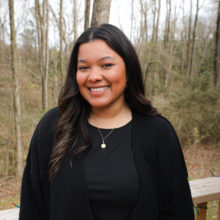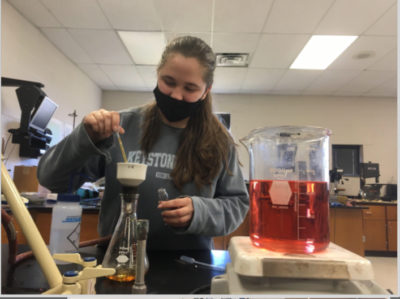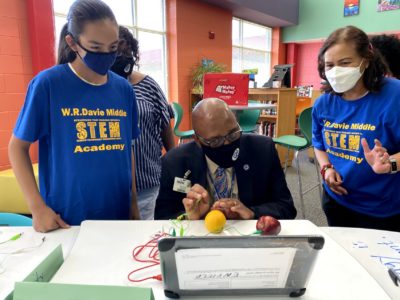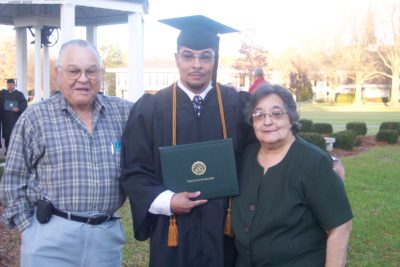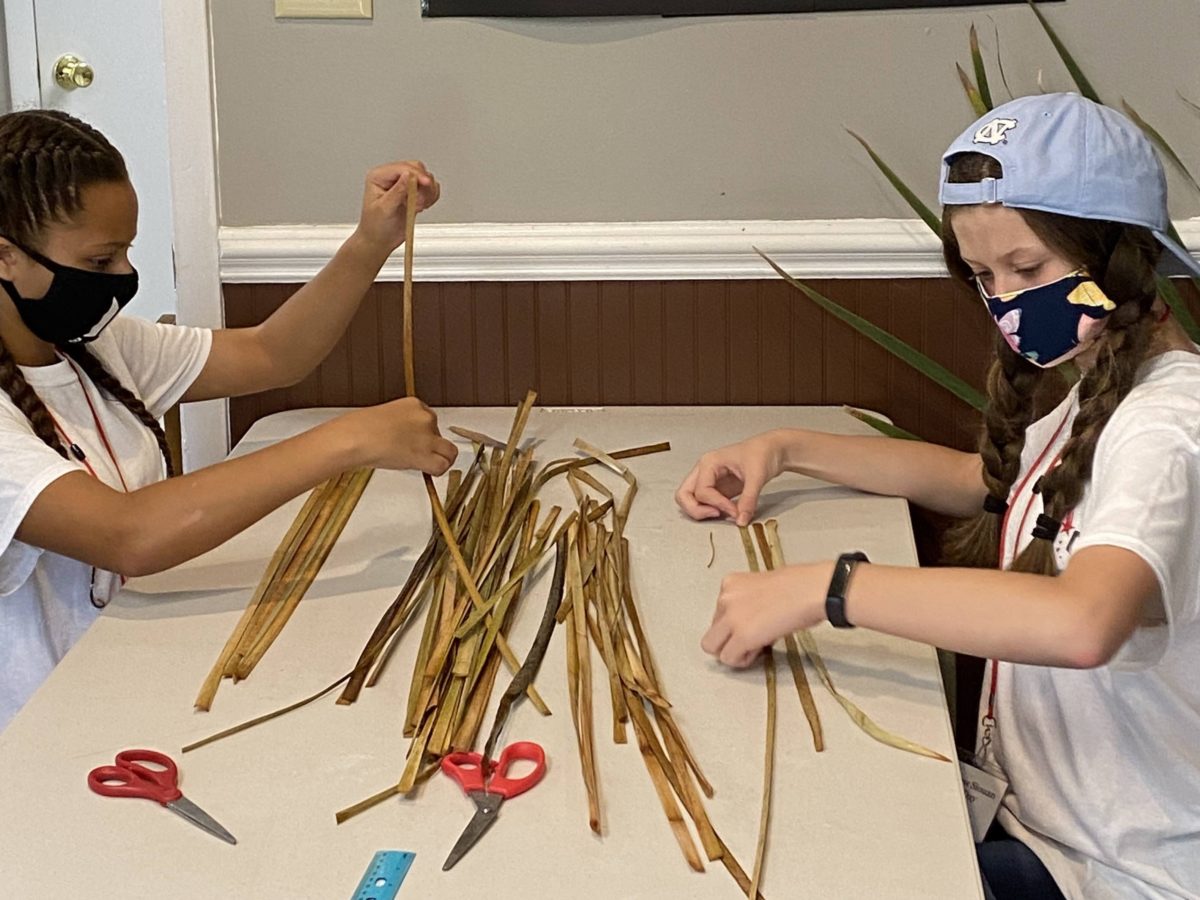
When her two young sons began to develop an interest in robotics, Ashley Lomboy began looking for STEM programs in her area. Lomboy, a member of the Waccamaw Siouan tribe, lives just outside of her tribal community, in Brunswick County. She was surprised to find her options were limited when it came to science, technology, engineering and math (STEM) academy programs. Lomboy is the division information security manager of optical fiber & cable for Corning Optical Communications LLC in Wilmington. Realizing she could work with others and create an affordable STEM program, Lomboy developed the STEM Studio.
Lomboy says from the beginning, the tribe’s goal was to provide STEM access and enthusiasm to children and the Waccamaw Siouan community who may have not had access before.
The Waccamaw Siouan tribe is located in Bladen and Columbus counties, largely nestled across small communities: Buckhead, St. James, and Council. It’s a rural area located near swampy waters and just down from Lake Waccamaw.
Lomboy has about 10 tribal members who assist her with the STEM Studio, most of whom no longer reside in tribal territory. Instead, they work in STEM fields and partner with community members to increase STEM education in the tribal community.
“We leverage what we know best to give back,” Lomboy stated. Team members specialize in engineering, civil engineering, information technology, mathematics, and more.
Beginning the STEM Studio started with surveying the tribal community to ensure that the group met community needs and wants and to survey the resources they had. From there, they were able to design plans for the STEM Studio.
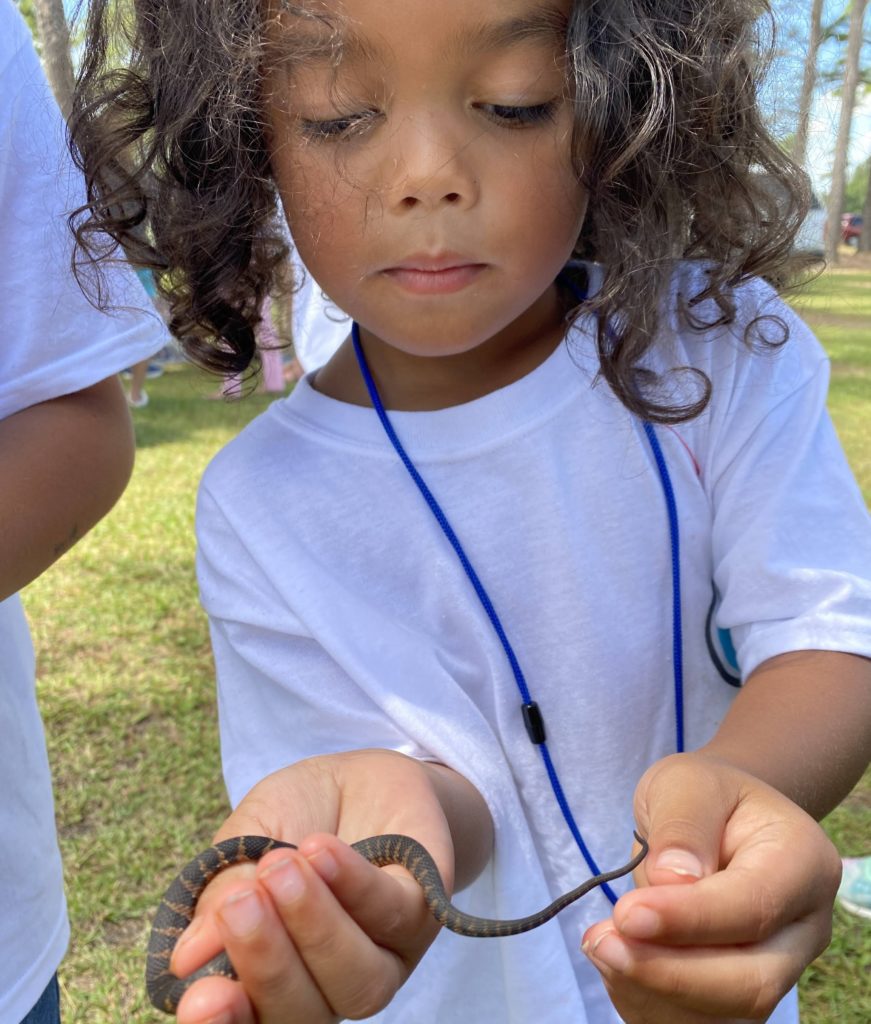
Logan Lomboy, a member of the Waccamaw Siouan tribe, learns about care for snakes and other wildlife in North Carolina through a workshop provided by the NC Wildlife Resources Commission. 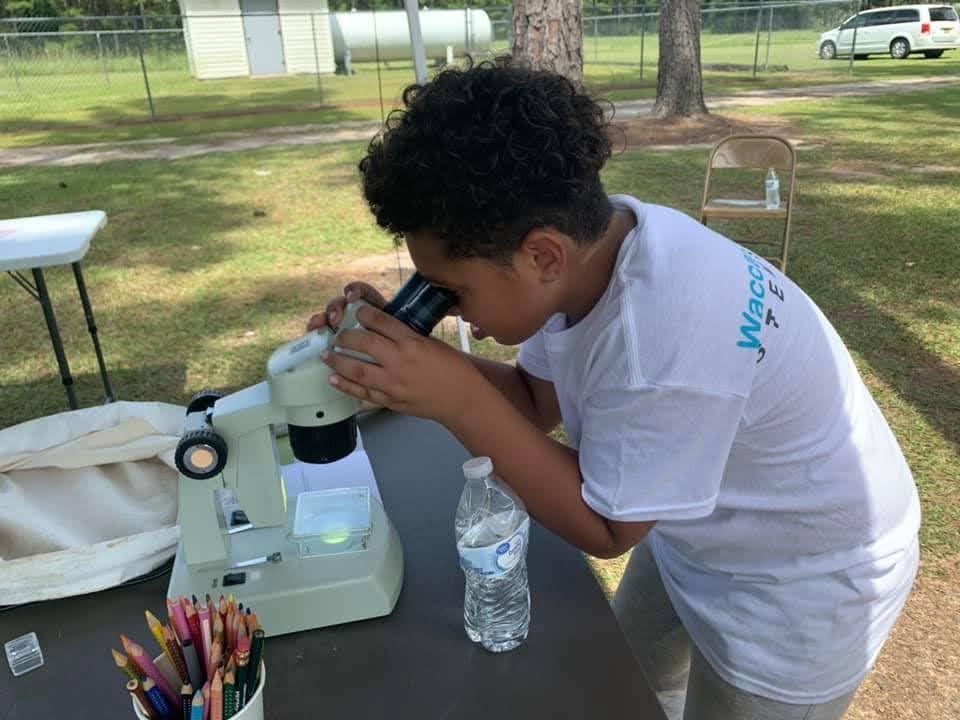
Grayson Pedro, a member of the Waccamaw Siouan tribe, analyzes insects through a microscope by participating in a workshop provided by the NC Museum of Natural Sciences.
During COVID, the tribe sent over 85 STEM kits to tribal youth located across the country — from Maryland to Florida and even New Mexico. What Lomboy and the rest of her team found was that COVID made the STEM Studio more accessible, even beyond what the organizers initially planned.
“We wanted to make the STEM Studio super accessible for as many people as possible,” Lomboy stated. “We wanted to make sure that the program was inclusive of all tribal members, regardless of their geographic location.”
The STEM Studio has secured partnerships with local nonprofits and universities, including the Corning Foundation, the Museum of Natural Science in Whiteville, Gardner Webb University, the University of North Carolina at Wilmington, and the University of North Carolina at Pembroke.
Through these partnerships, the STEM Studio has hosted a STEM Day, allowing students to learn more about robotics, traditional living, catapult building, bridge-building, and more. The tribe hosted a day full of activities and career exploration, with 38 tribal youth participating. The Waccamaw Siouan STEM Studio hopes to award a total of $1000 in scholarships to tribal youth, largely due to support from the Corning Foundation, the Corning Native American Council, and Red Hat. Each partnership allows the group to continue having a tangible impact in the tribal community.
An additional partnership with the NC Wildlife Commission allowed the STEM Studio to host several “Fish Days” and teach fishing. Here, tribal elders, youth, and everyone in between came out to learn (or re-learn) proper fishing skills and cooking.
With another Corning Foundation grant, the Waccamaw Siouan tribe is moving forward with the Star Preservation Project. For years, Indigenous stories have been told through a white or European lens, but this project will allow the tribe to record its own history. With help from UNC-Pembroke, STEM Studio will train tribal members to conduct interviews and edit audio, and thus control the narrative and the way their history is recorded. Lomboy says this project will record oral histories and, she hopes, empower tribal youth.
From its resourcefulness in providing STEM education to tribal youth to its reclamation of tribal history, the Waccamaw Siouan is showing what happens when communities come together and share common goals.
